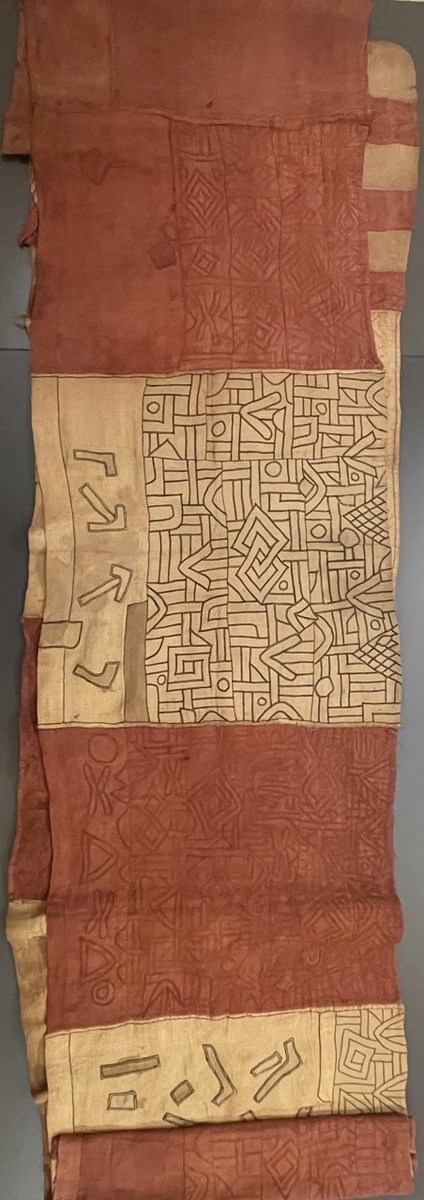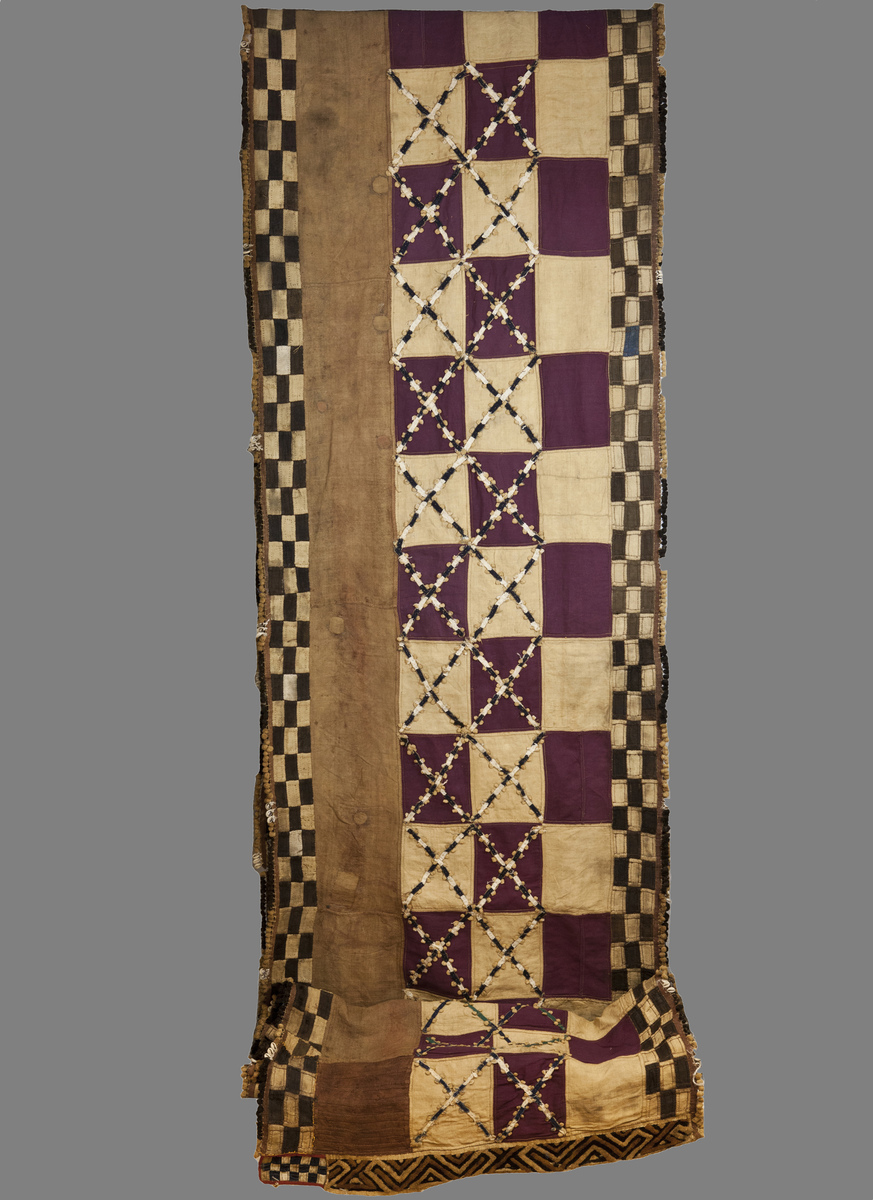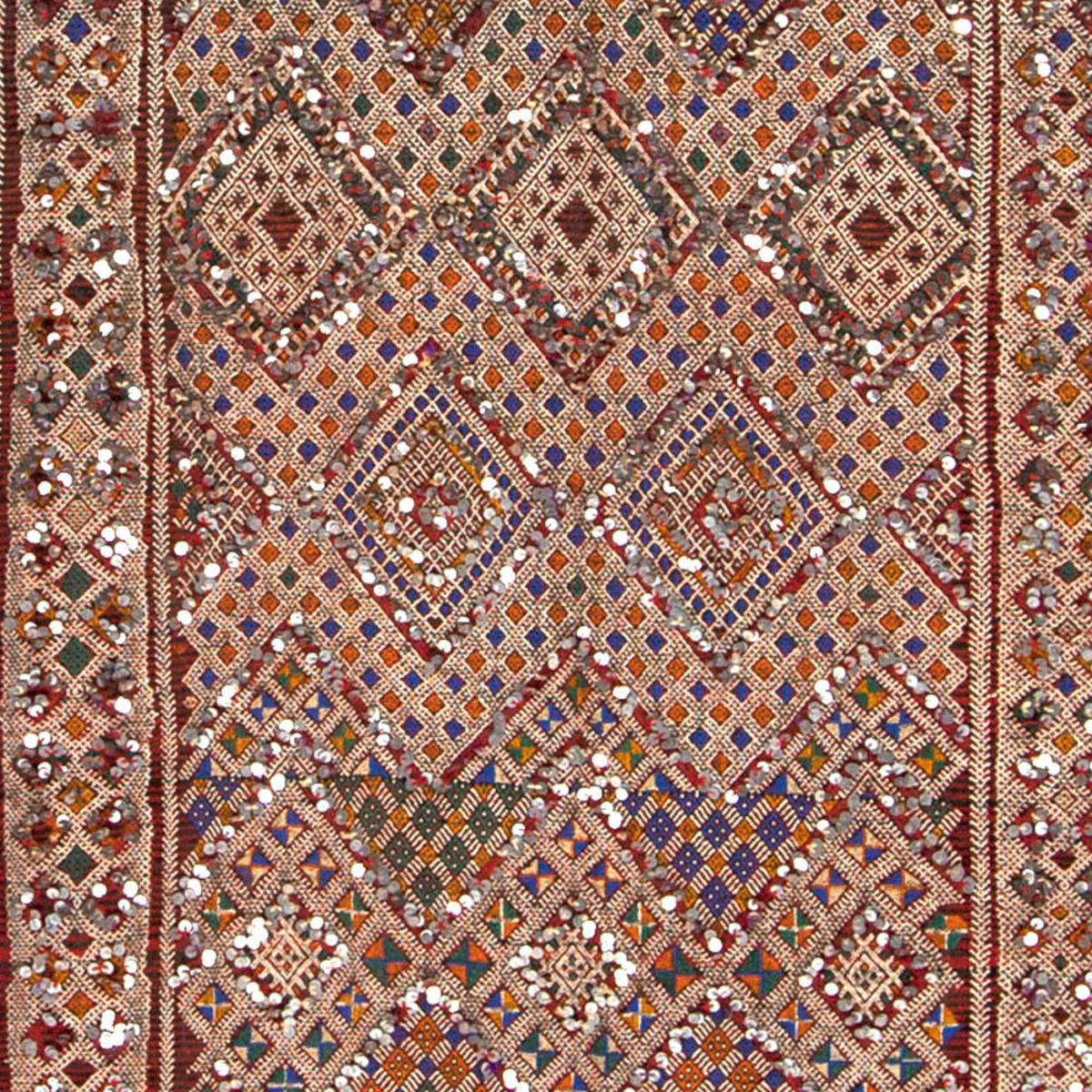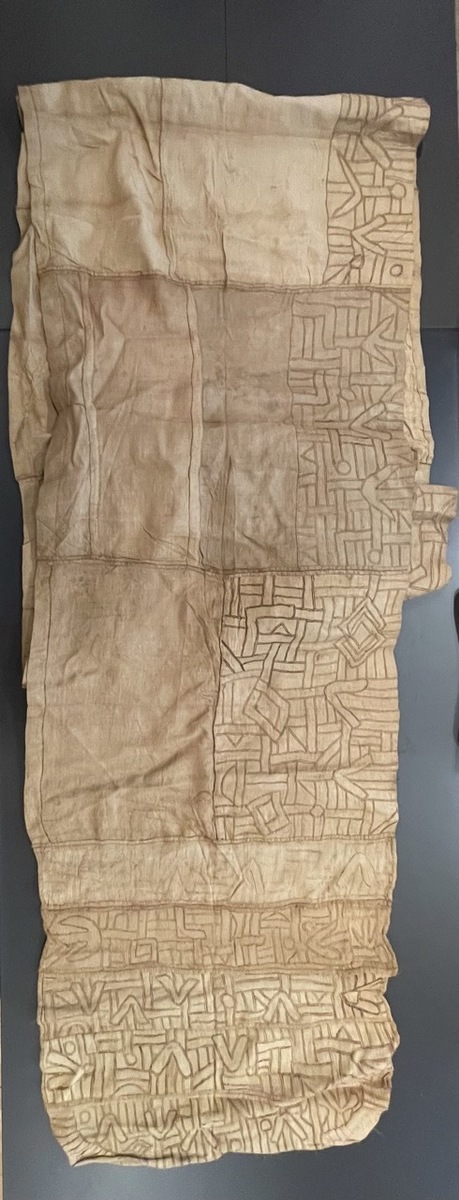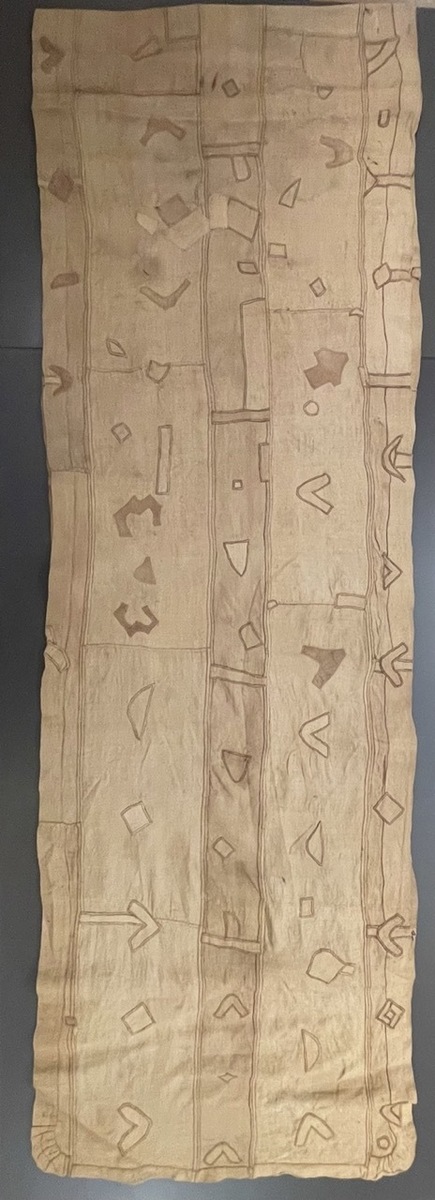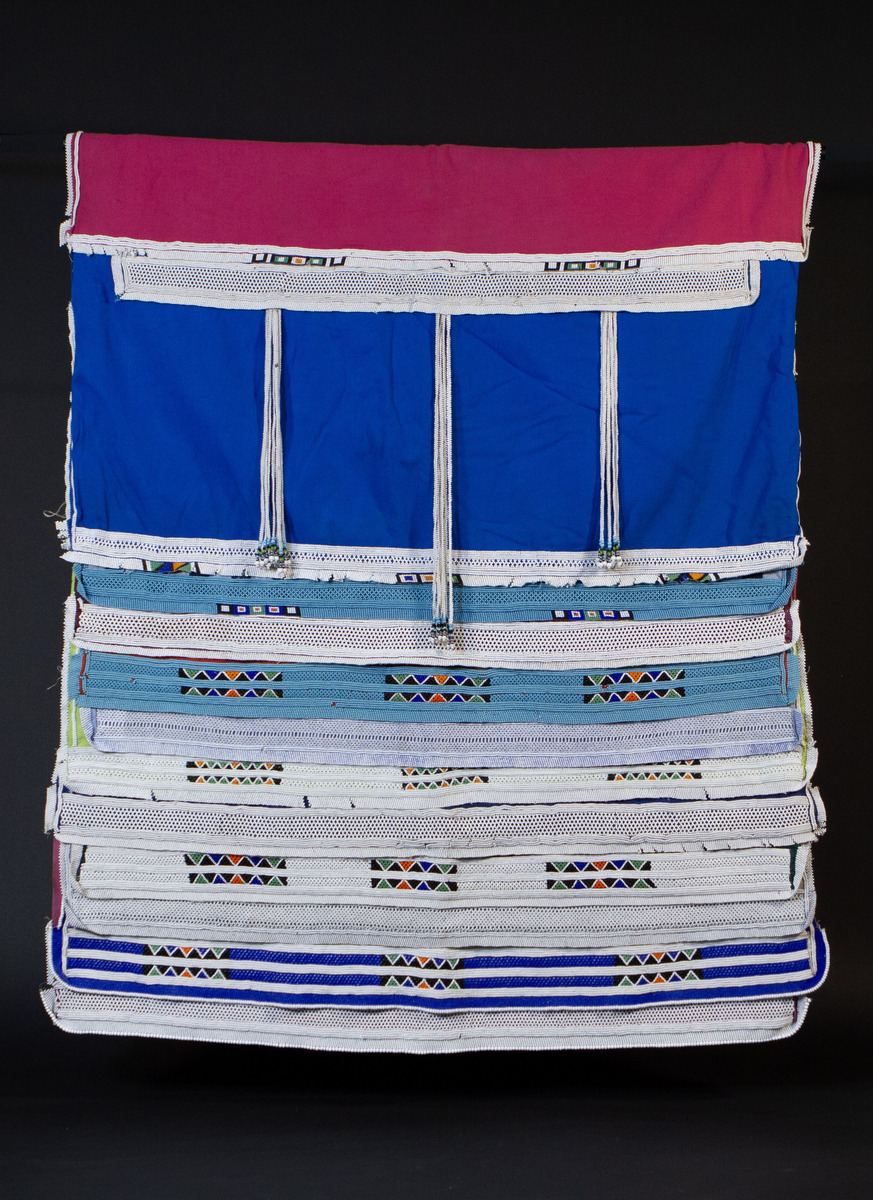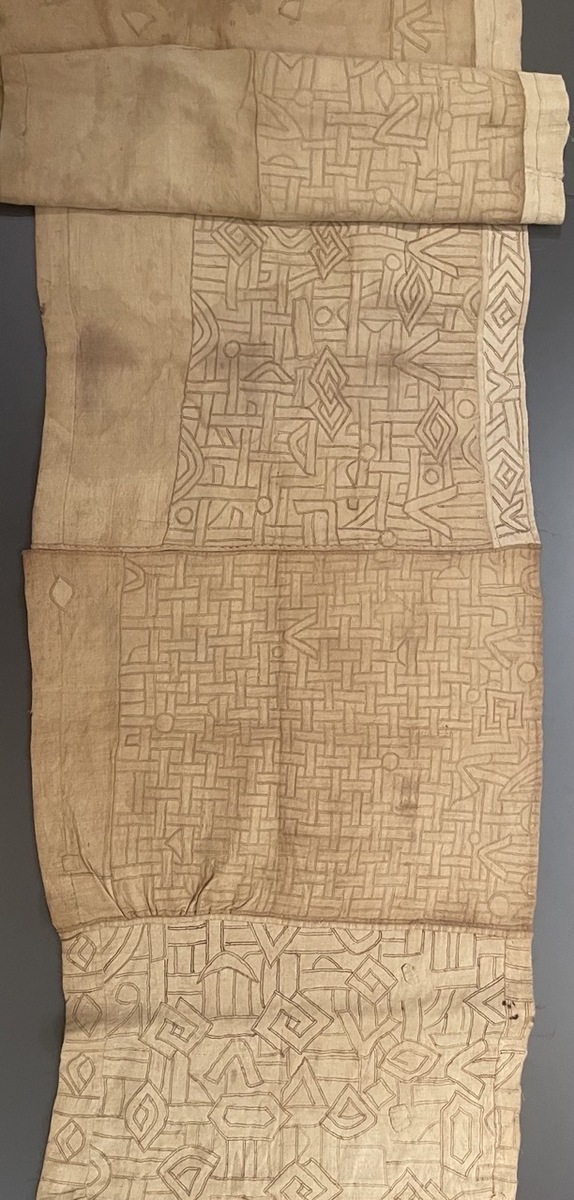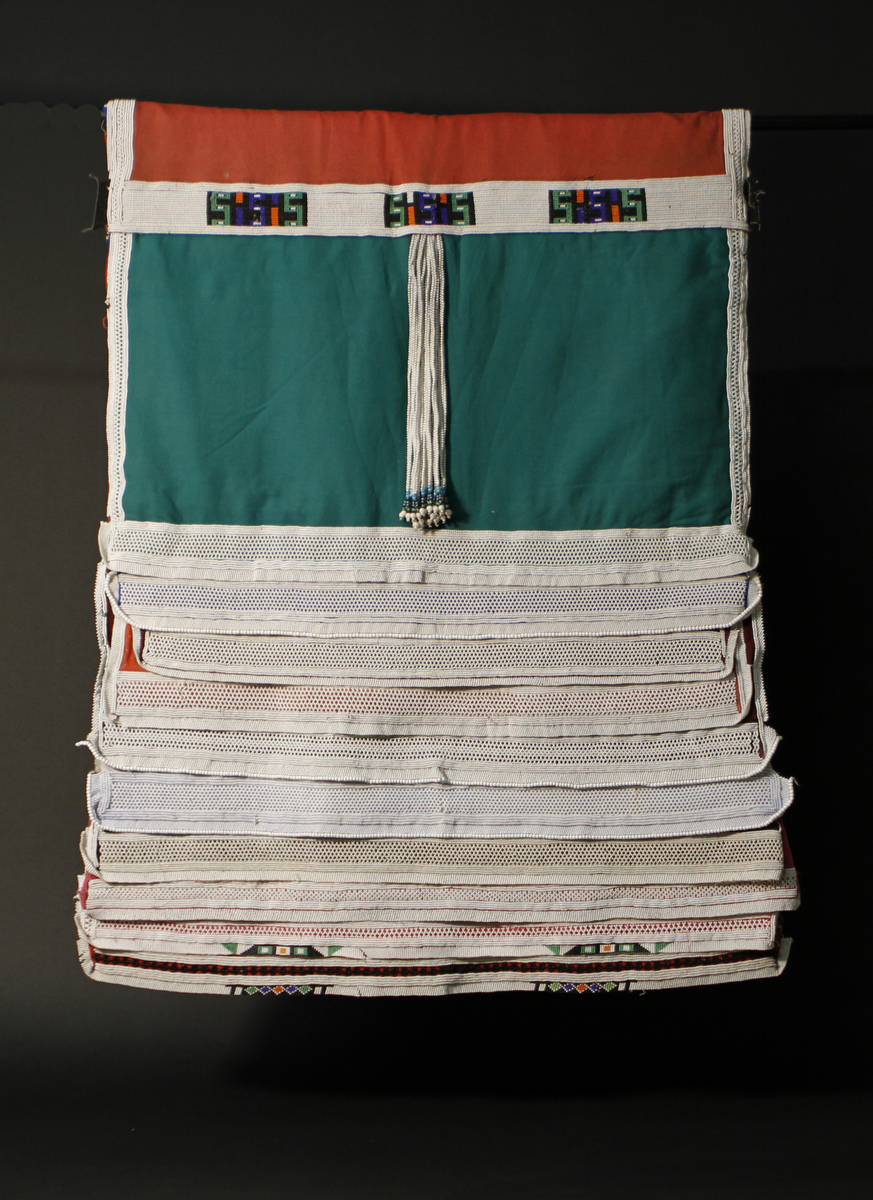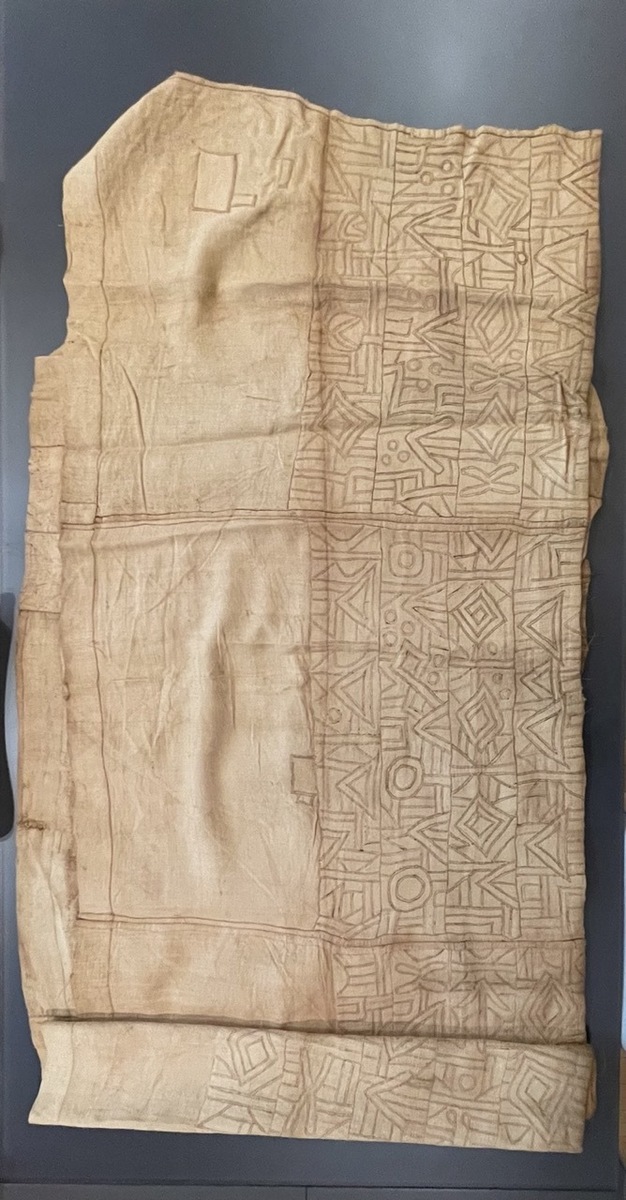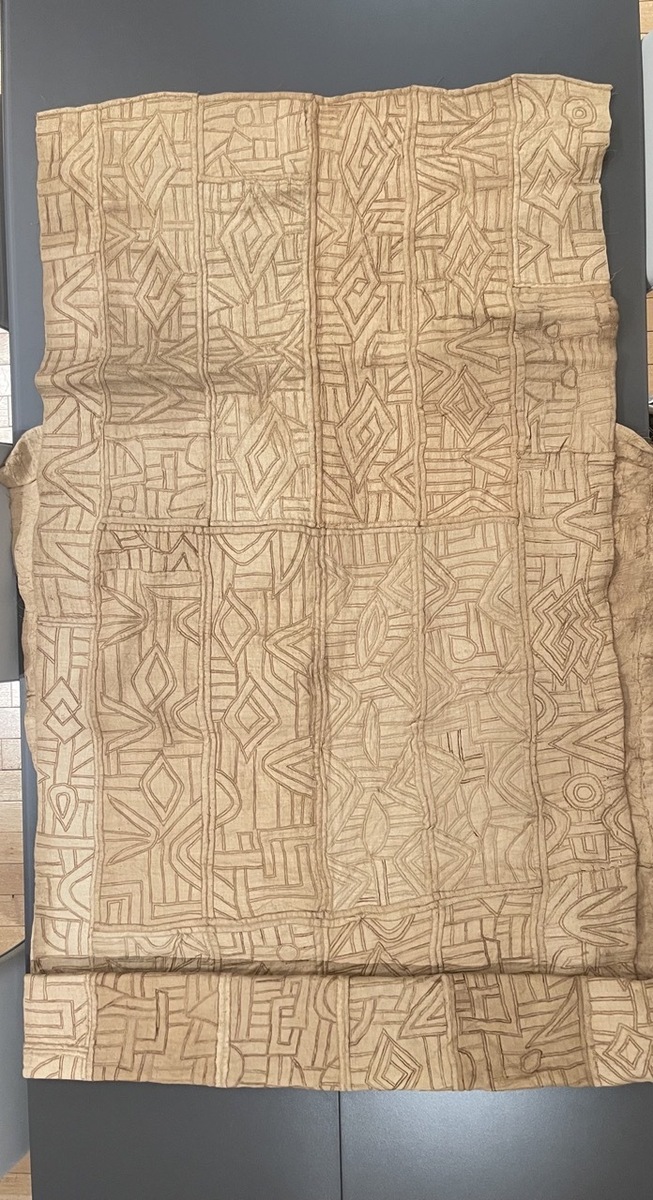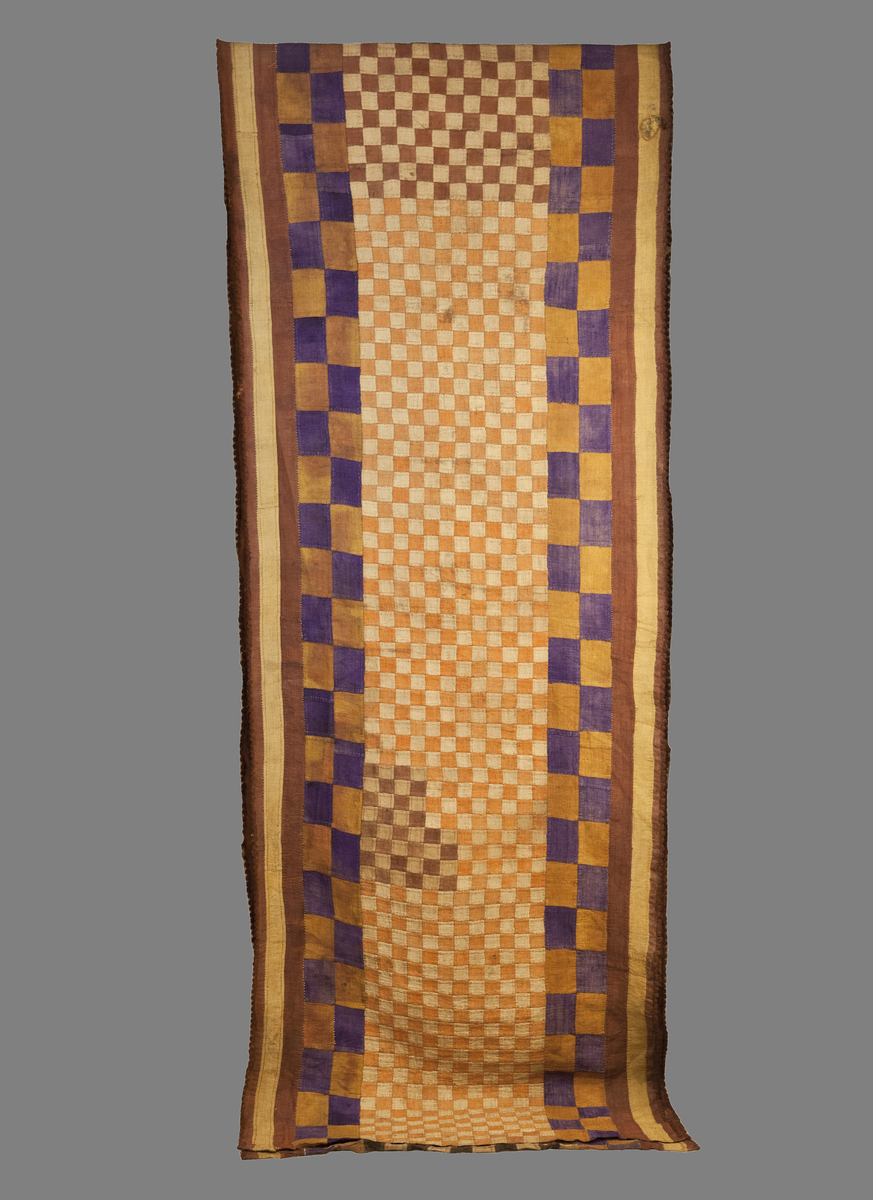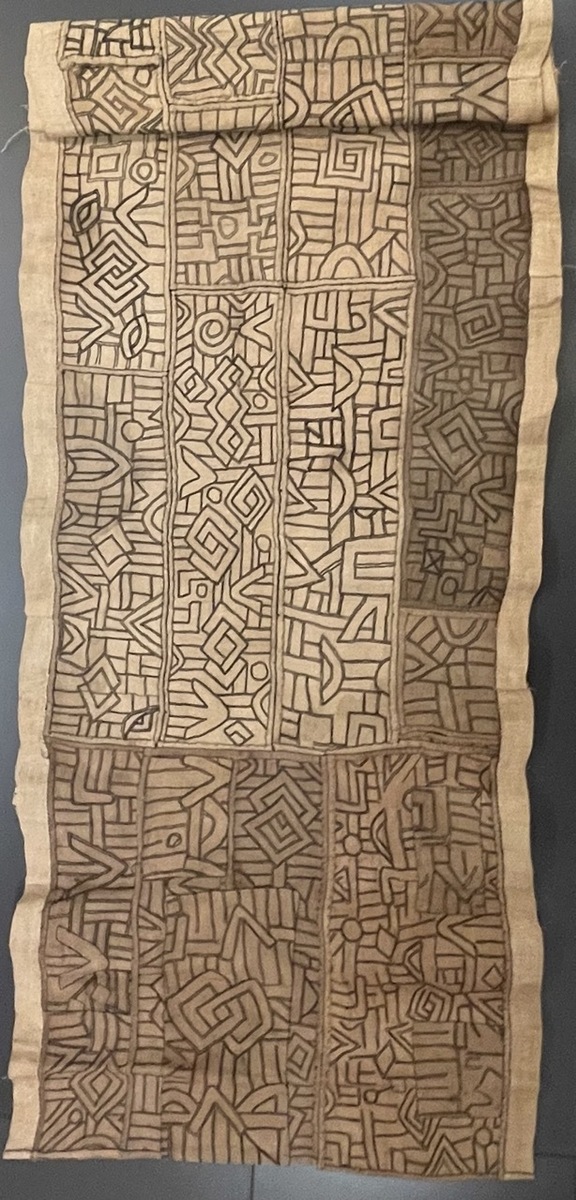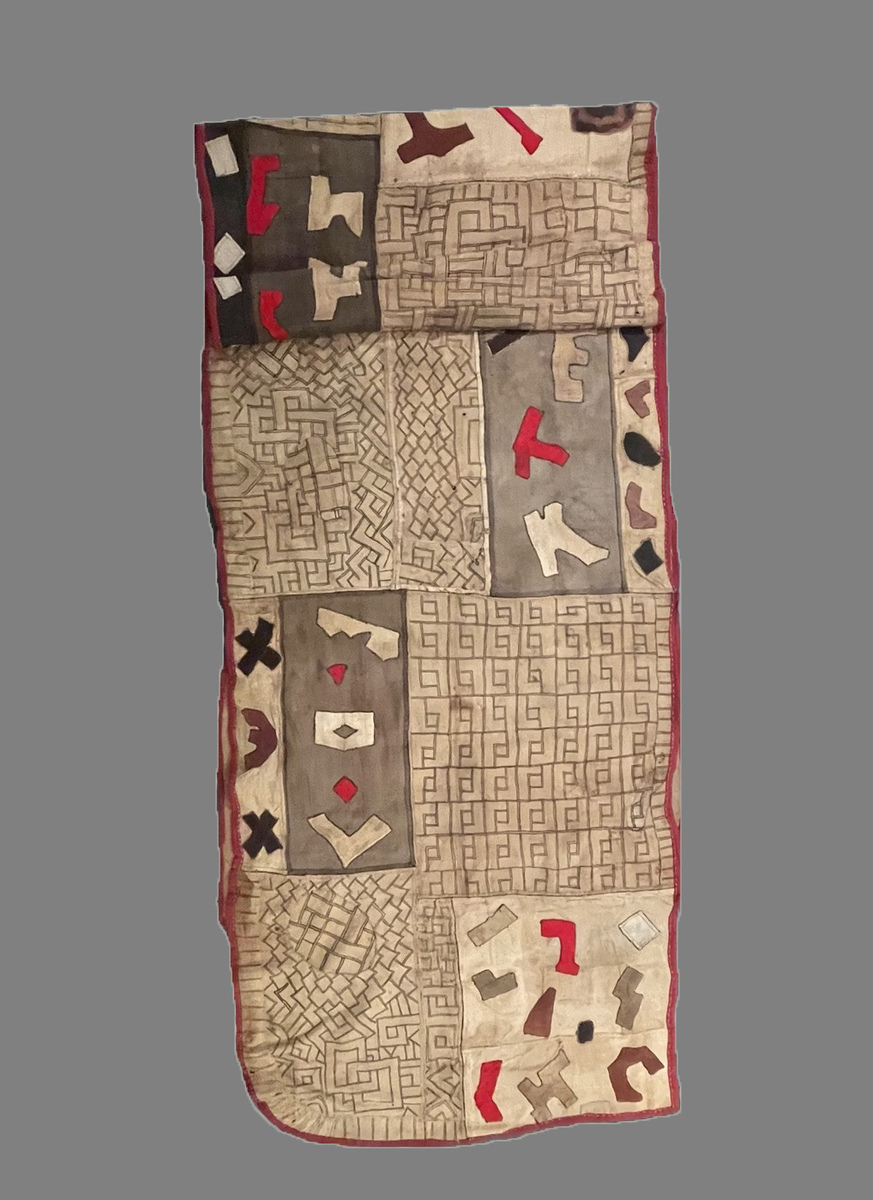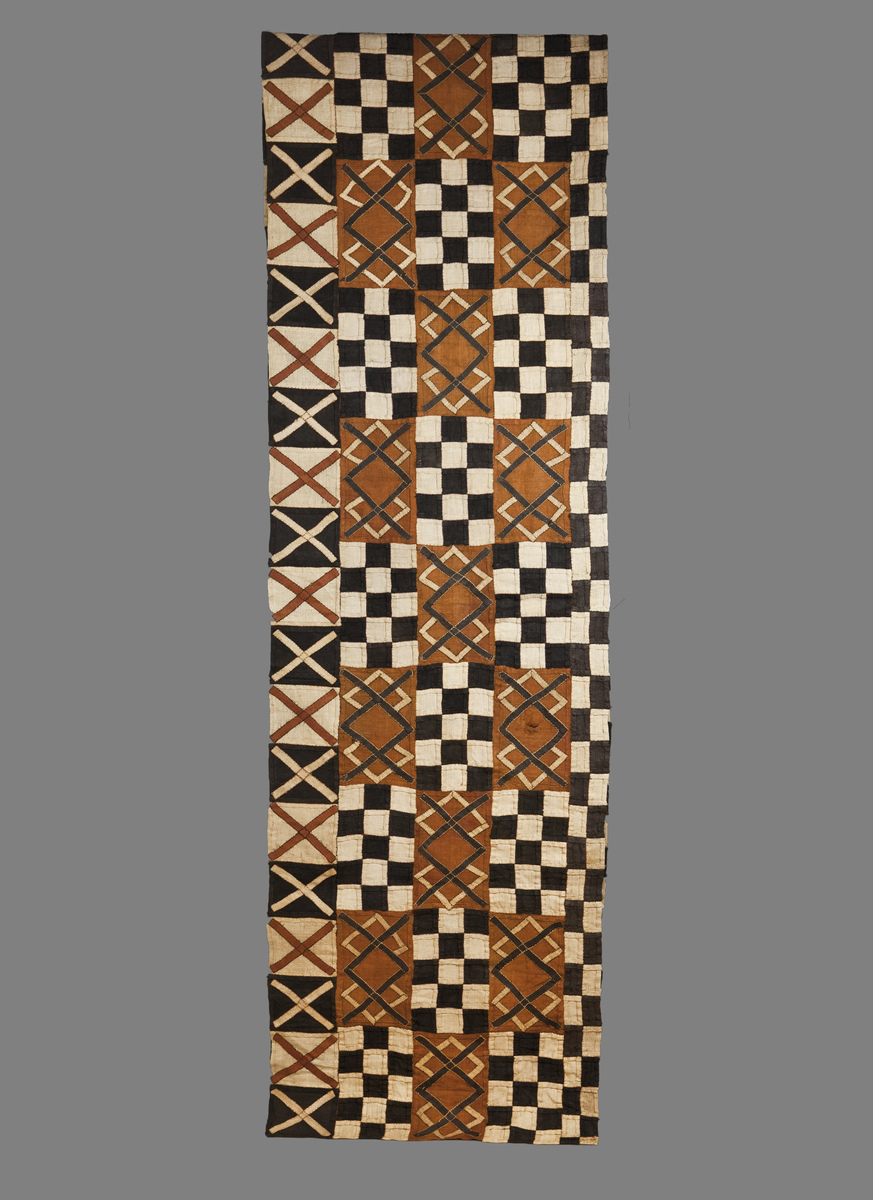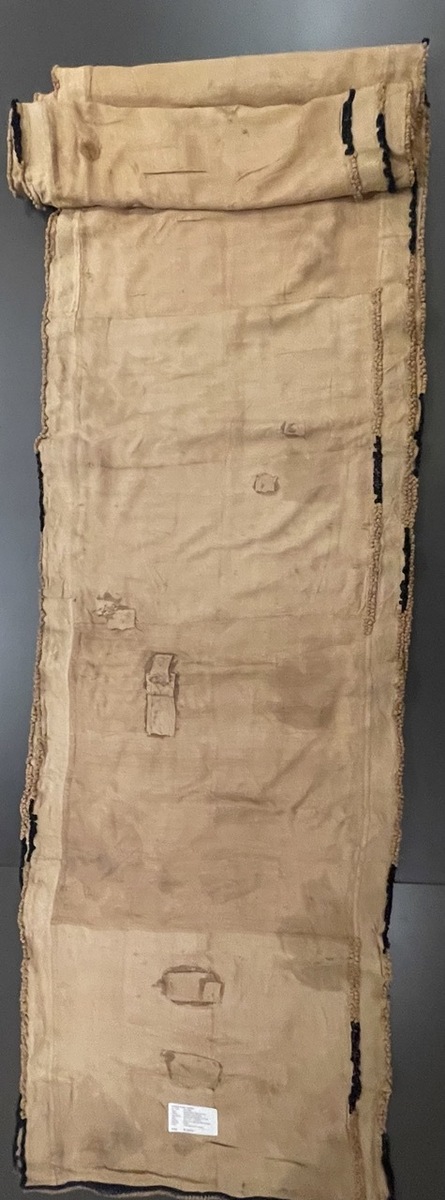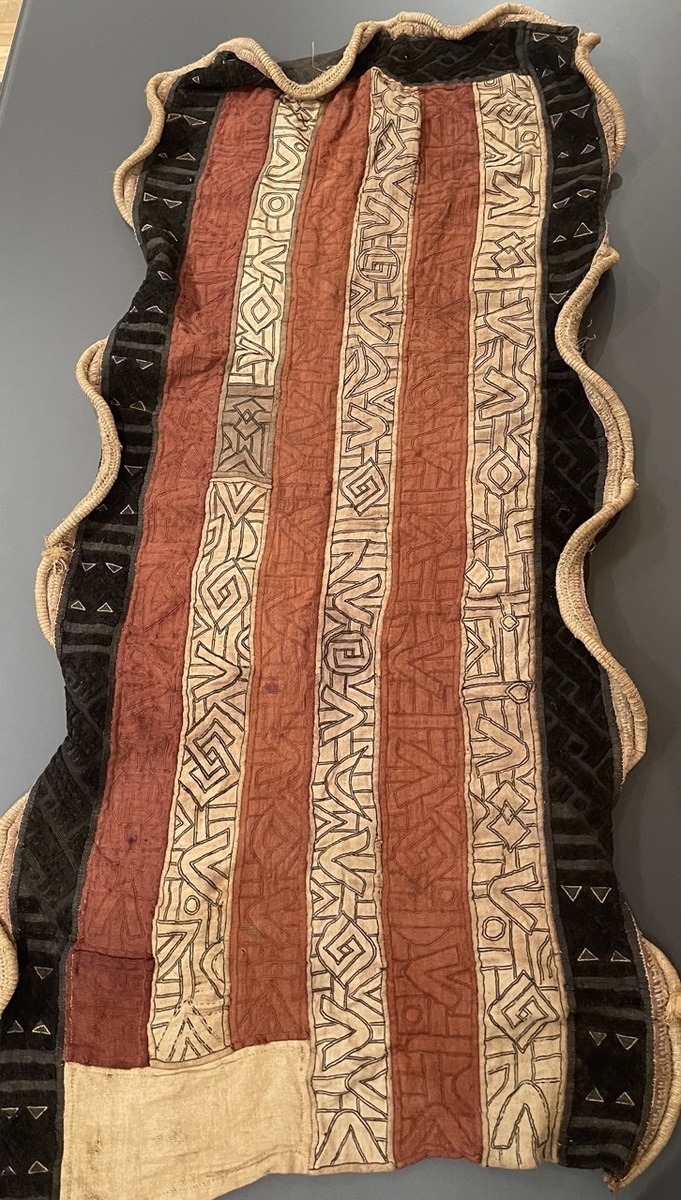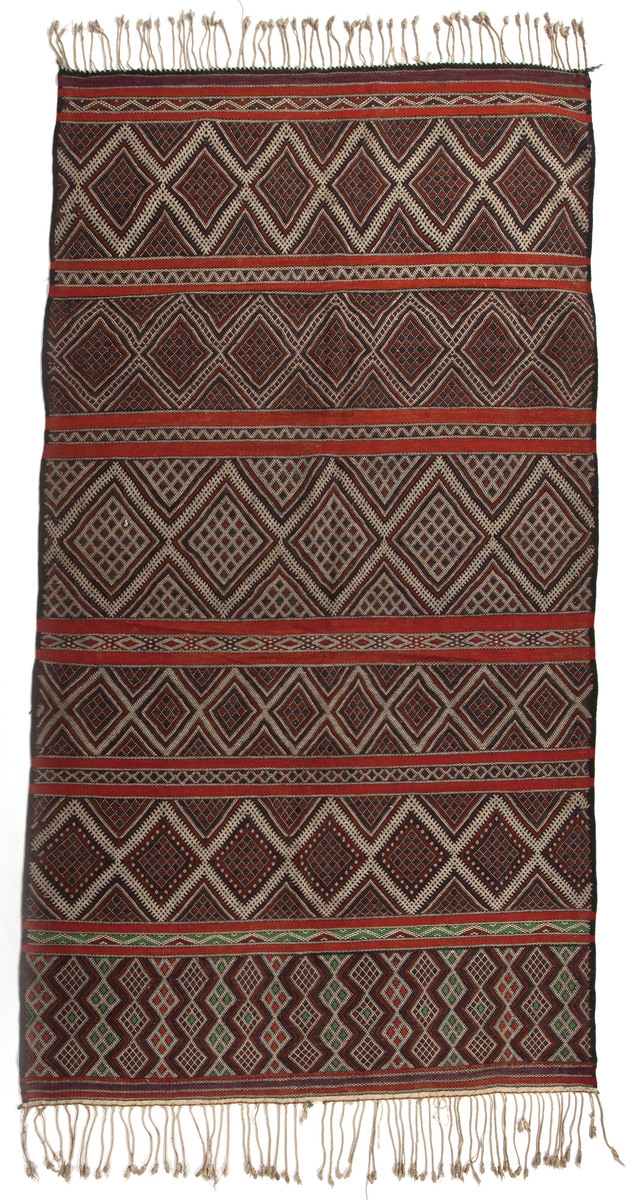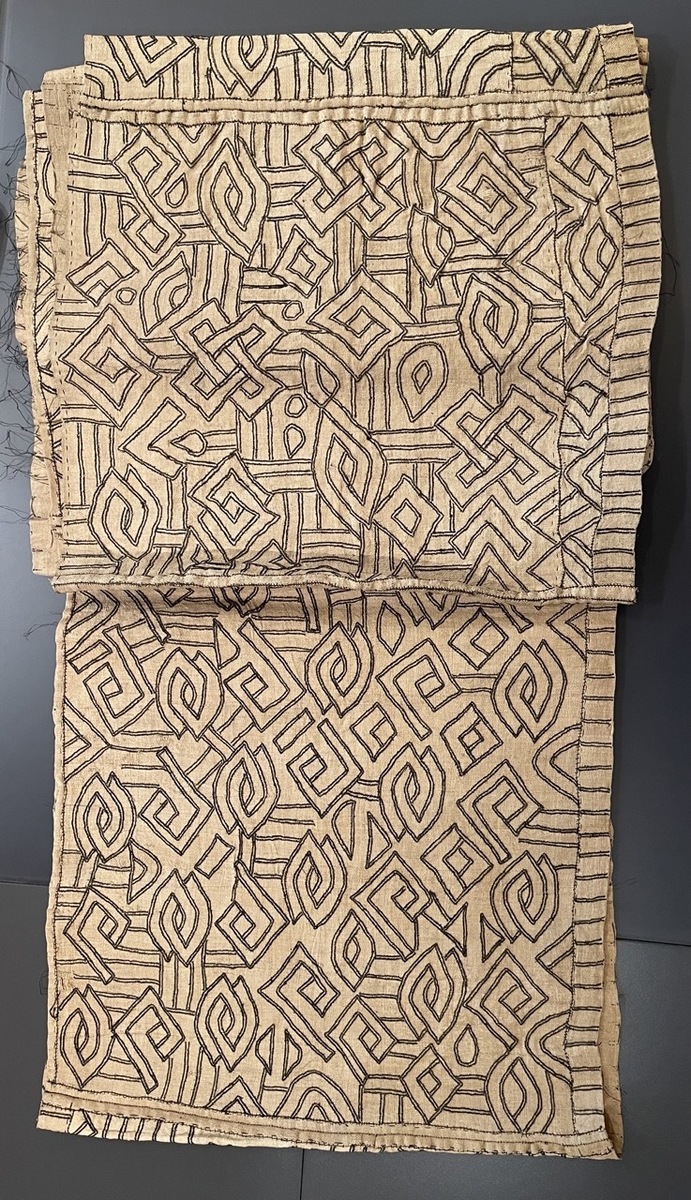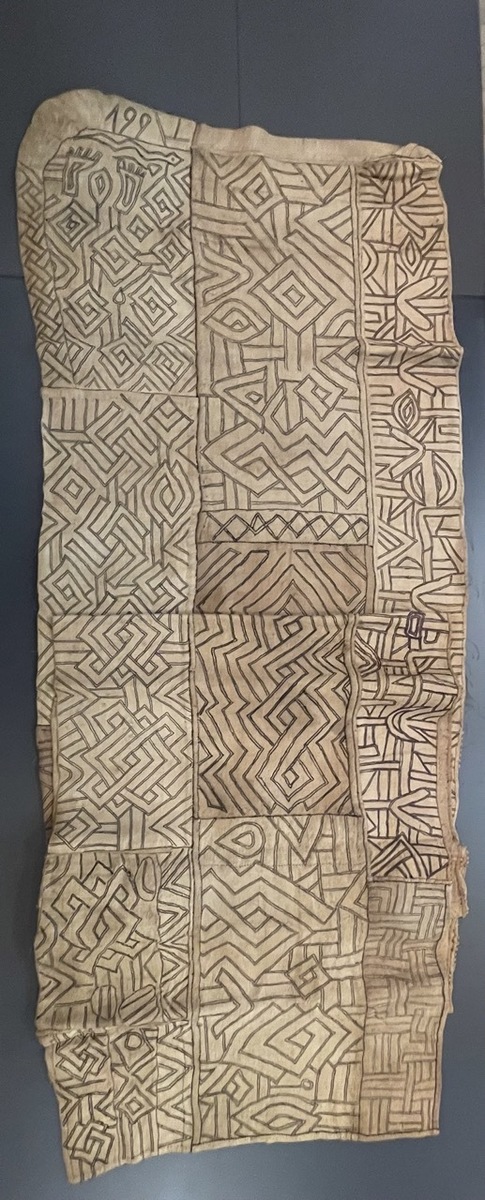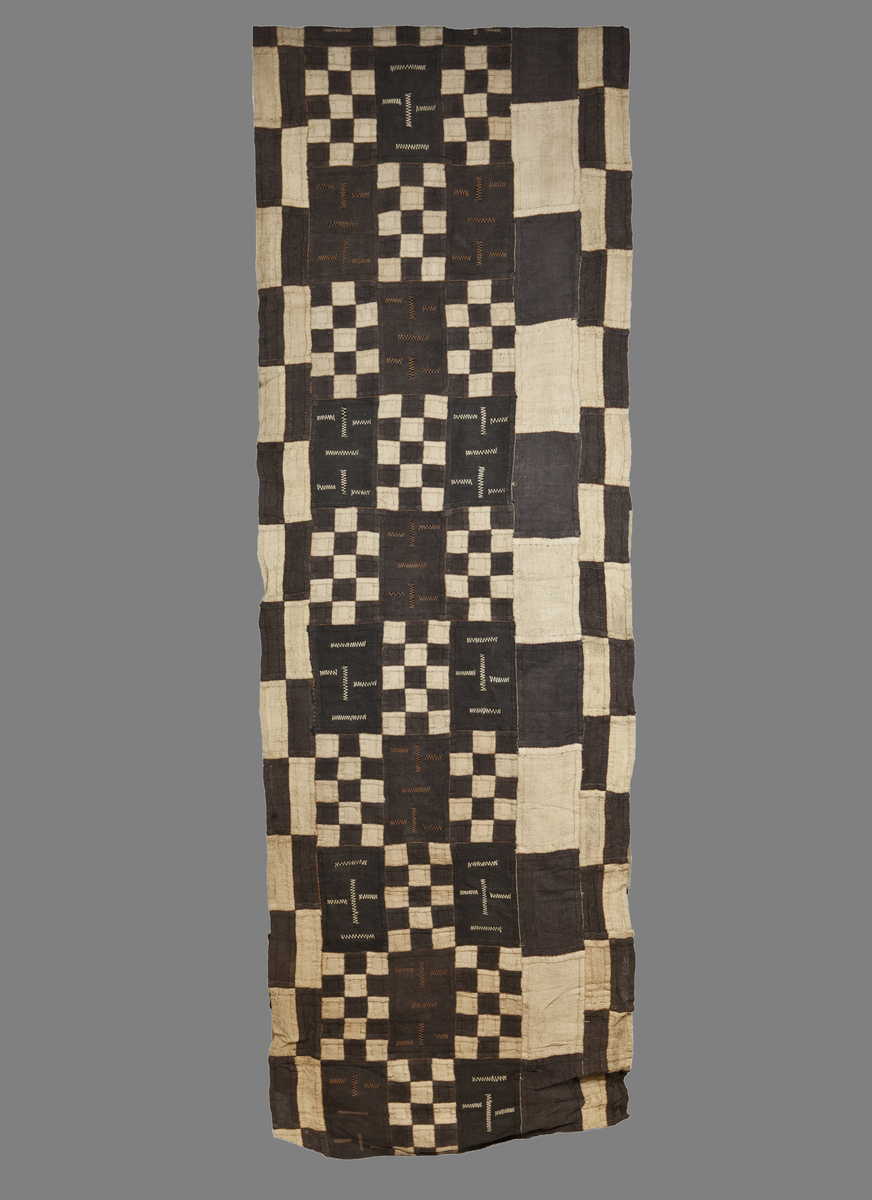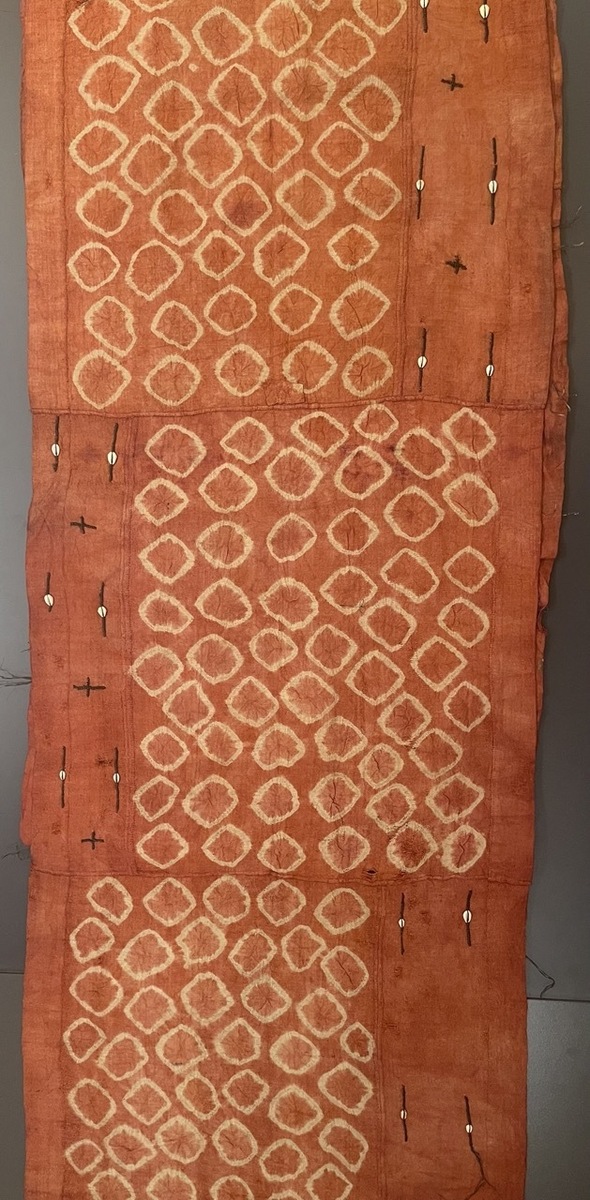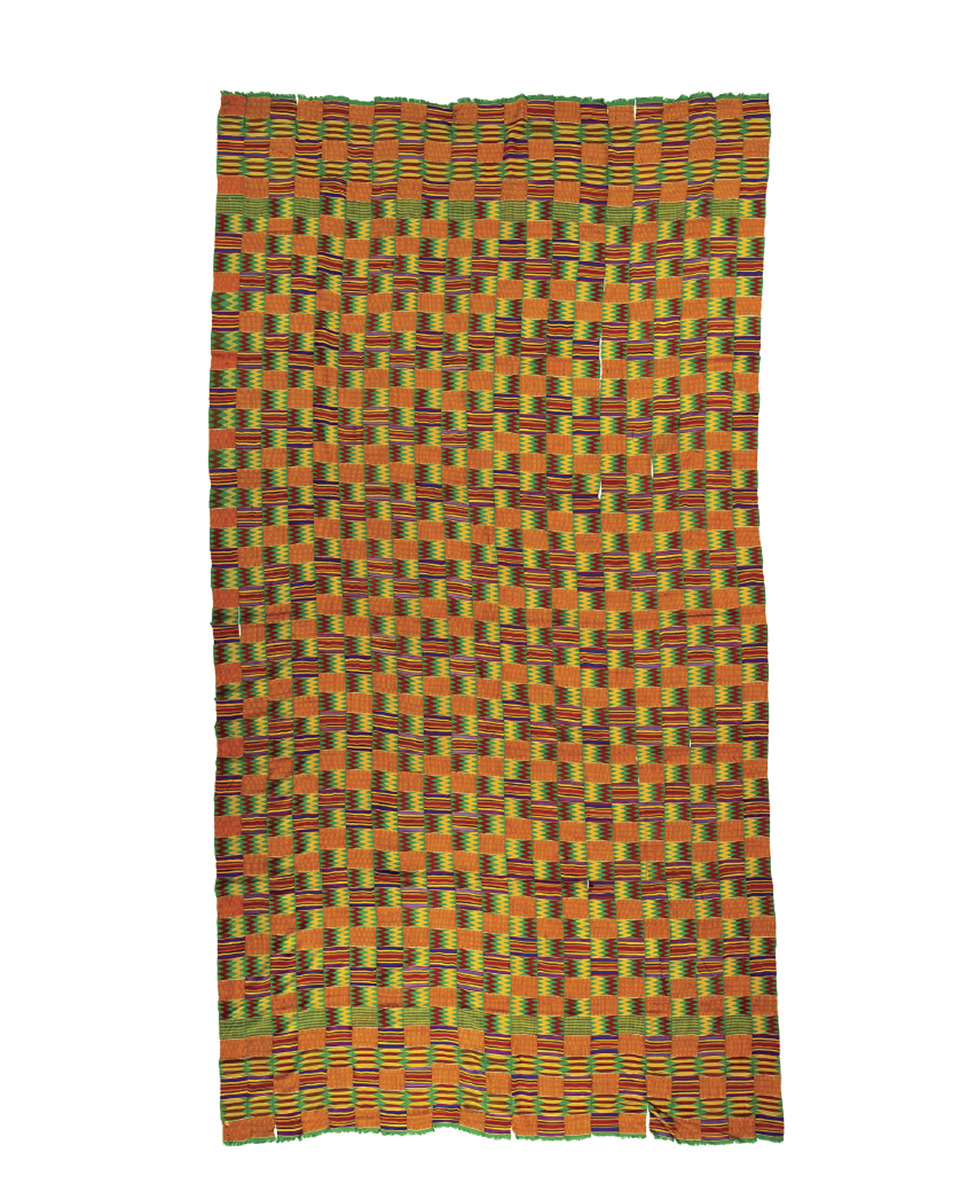Description
Kuba People, Busong Kasi River Region, Democratic Republic of the Congo
Raffia palm fiber, natural pigments, embroidered applique
The Kuba kingdoms, renowned for their textile mastery, created raffia cloths of extraordinary complexity and refinement. This ceremonial overskirt, woven from the supple fibers of the raffia palm, exemplifies the Kuba’s unrivaled command of surface design, where geometry and rhythm converge into a language of prestige and cultural identity.
Worked in a palette of warm earth tones and animated by intricate linear embroidery, the composition reveals a harmony of angular and curvilinear motifs—abstract forms that carry both aesthetic force and symbolic resonance. The oscillating lines and interlocking shapes create a dynamic visual cadence, echoing the innovations for which Kuba textile designers are celebrated. Each motif, traditionally assigned a name, honored the ingenuity of its originator while affirming the shared cultural memory of the community.
Such garments were reserved for occasions of significance, worn by women of status during dances, initiations, and other public ceremonies. Beyond their role as adornment, Kuba textiles functioned as material wealth, exchanged in dowries, accumulated as markers of prestige, and laid as funerary shrouds to honor the deceased. Their tactile brilliance and artistic daring drew the admiration of early European visitors, who likened them to the finest velvets and silks of the West.
This overskirt stands as both a garment and a statement of artistic sovereignty—an enduring testament to Kuba ingenuity, where creativity, cultural symbolism, and social importance are woven inseparably into form.









